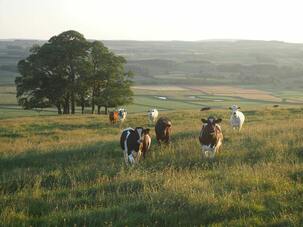
Concentrated Animal Feed Operations (CAFO) is an industrial agricultural system for raising livestock that started in the 1970s. CAFOs place thousands of animals in a confined area, with large feedlots for cattle, large houses for poultry and pork, and confined netted enclosures for fish. CAFOs pose several threats to you directly and the environment. Let’s start with beef.
In large-scale beef production, the cattle are fed corn and soy, which is an unnatural diet for them. Cattle should be grazing on grass in pastures. Corn is omega-6 (inflammatory) and grass is omega-3
(anti-inflammatory). Grass-fed and finished beef is healthier for you and more humane for the
animal. Cows are also given bovine growth hormone to add weight quickly in order to get to
market more quickly. A shorter time from birth to slaughter means more money. You probably
don’t need a dose of bovine growth hormone to help you bulk up.
These same types of scenarios can be seen with pigs, chickens, and fish. We would like the
animals we raise to live a natural and healthy life eating what nature intended.
Antibiotic used in livestock accounts for 80% of antibiotic use in the U.S. An animal raised in a
CAFO needs antibiotics in order to stay alive in this unhealthy environment. Antibiotics used in
this way support the emergence of superbugs. Superbugs may be antibiotic resistant. You may
have heard of the growing concern in medicine over drug resistant bacterial infections. The
medical community fears we may one day soon have many drug resistant infections with no
antibiotic solutions. This scenario would take our world back to days before antibiotics, like
penicillin.
Sweden became concerned about the increase in drug resistant pneumonia infections in the
1990s. To counter this increase, they severely restricted antibiotic use in their animal husbandry
practices. By also using antibiotics only for bacterial infections in humans, the Swedes saw that
antibiotics used for people drop by 43% - 74%, depending on the age of the population being
studied. Would you like to live where infections were down?
The animal urine and feces generated by the animals in CAFOs is placed in liquid manure
lagoons, which may leak into underground water, polluting drinking supplies and the natural
ecosystem.
CAFOs also account for 18% of human greenhouse gas production. Greenhouse gas helps to fuel
climate change that makes it harder for all the animals, plants and humans to thrive, and some
even to survive. We depend on the diversity of our home, Earth, for our health and lives.


 RSS Feed
RSS Feed